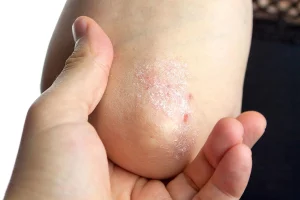Your child’s risk of harm from social media is higher at certain ages and it’s different for girls and boys, researchers report.
To figure out how social media use affected “life satisfaction” among 10- to 21-year-olds, the investigators analyzed long-term data on 17,400 young people in the United Kingdom.
The new study found key periods when heavy social media use was associated with lower life satisfaction calculated a year later.
For girls, that period was between 11 and 13 years of age. For boys, it was 14 and 15.
“With our findings, rather than debating whether or not the link exists, we can now focus on the periods of our adolescence where we now know we might be most at risk and use this as a springboard to explore some of the really interesting questions,” said lead author Amy Orben of the MRC Cognition and Brain Sciences Unit at the University of Cambridge.
The study authors said the gender differences suggest sensitivity to social media might be linked to developmental changes, such as those in brain structure or puberty, which occurs later in boys than in girls.
Higher amounts of social media use at age 19 predicted lower life satisfaction a year later for both young men and women, the findings showed. The researchers suspect this may be because major changes at that age — such as leaving home or starting work — may make people more vulnerable.
At other ages, the link between social media use and life satisfaction was not statistically significant, according to the report published online March 28 in the journal Nature Communications.
But another link was noteworthy: Declines in life satisfaction predicted increases in social media use, regardless of age or gender.
“The link between social media use and mental well-being is clearly very complex,” Orben said in a university news release. “Changes within our bodies, such as brain development and puberty, and in our social circumstances appear to make us vulnerable at particular times of our lives.”
Study co-author Sarah-Jayne Blakemore, a professor of psychology and cognitive neuroscience at the University of Cambridge, said that it’s not possible to pinpoint the processes that underlie this vulnerability because the mental, biological and social changes of adolescence are intertwined. As a result, it is difficult to disentangle one from another.
“For example, it is not yet clear what might be due to developmental changes in hormones or the brain and what might be due to how an individual interacts with their peers,” Blakemore said.
The new study follows pledges from prosecutors and lawmakers to hold social media companies responsible for harming children, The New York Times reported.
The issue is a significant one. The Times noted that nine out of 10 American teenagers have a smartphone, and surveys show they spend many hours a day using it to communicate through social media, play games and watch videos.
Another recent study found that kids who use the video-sharing app TikTok are developing tics and having tic-like attacks.
More information
For more on children and media use, go to the American Academy of Pediatrics.
SOURCE: University of Cambridge, news release, March 28, 2022
Source: HealthDay
Copyright © 2025 HealthDay. All rights reserved.















